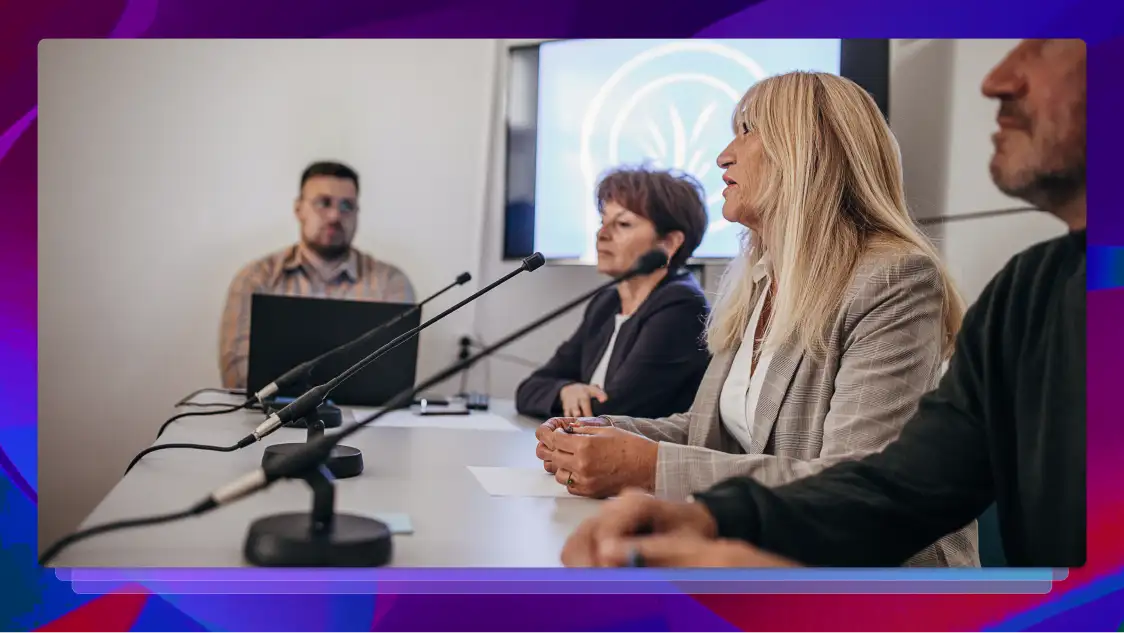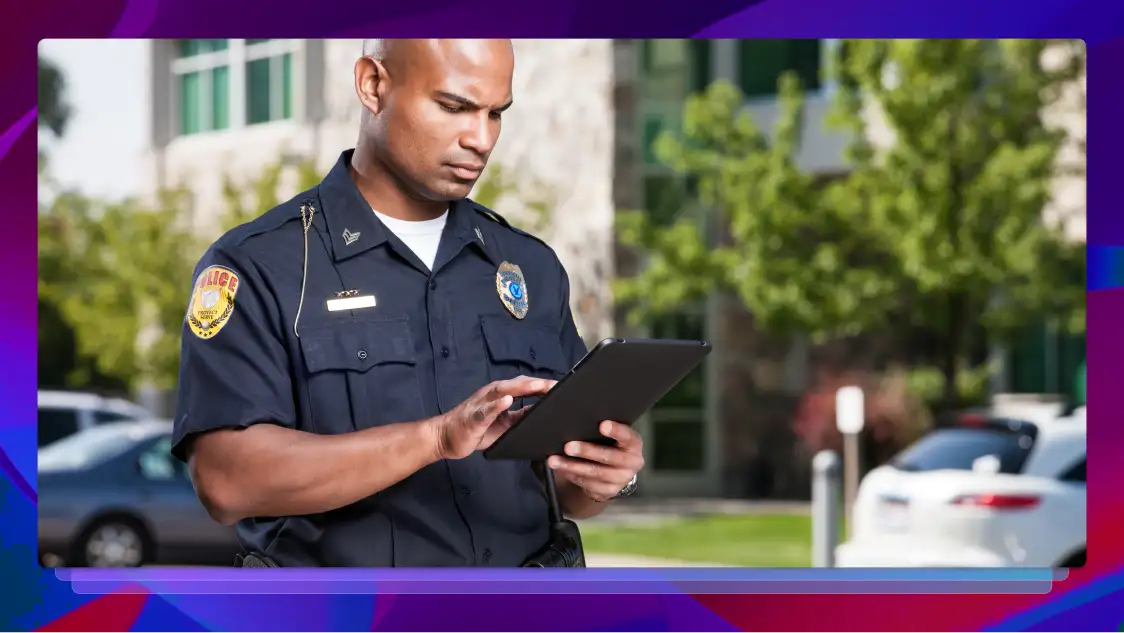Making Video Consent Forms and Release Forms (FREE Template)
Learn what a video consent form is, why you need one, what to include, and who needs to sign it with our guide.

Getting real footage from real people can make your article, research, or documentary stand out. Before you can dive headfirst into filming your subjects (non-actors), there is one item of importance they need to complete before rolling: sign a video consent form.
Whether you are conducting a documentary interview, journalist interview, market research interview, or something in between, creating your own video and interview release consent form is necessary for receiving the appropriate permissions from people featured in your production, as well as, protecting yourself against any future complications (learn more about film & television set security on our blog).
In this article, we’ve compiled an in-depth collection of everything you need to know about creating your own video consent form. And the cherry on top? We’ve created a customizable video consent and release form template for you to use for your business and work projects – free of charge.
Difference Between Video Consent Forms & Video Release Forms
Interview consent forms and video release forms come in many shapes and sizes, but should always be a top priority when mixing media and talent. Consent and release forms are given to your talent (interviewees, models, actors, etc.) and grants you permission to use their image (in video or photo form), audio, and their words in your production.
Interview consent forms seek permission from the subject to use their image, audio, and dialogue.
So, what’s the difference? To put it simply:
- An interview consent form states the interviewee understands their words will be used in publications
- A video release form seeks permission from the subject to use their image, audio, and dialogue in publications.
Although each contains different focuses, you can mix and match various types of consent and release form verbiage to create a consent and release form that best suits your needs.
Why Do I Need a Video and Interview Release Form?
Like many things during production, situations and people can change. One day you’re shooting an interview featuring a key person that seems passionate about the project. Then, they have second thoughts about being “on-camera” after you’ve already shot the interview. Without a signed release form, it’s no longer at your discretion and you have to legally comply with their request to not use their footage in your project.
Consent and release forms help prevent legal complications that could arise.
Having a video consent form signed before the filming process begins prevents the person from coming to you saying they want any usage of their image to be removed from the project. In essence, a video release form helps to avoid any further legal complications that could arise in the future.
PRO TIP: If you don’t get explicit permission from your interview subject, you likely can’t use anything you capture from them. This includes video, audio, as well as the human audio transcription of what they’re saying.
When Should I Get a Consent Form Signed?
A media release form states that the individual acknowledges and understands that their involvement with the specified project can be used however the company administering the consent form sees fit. Because the video and interview consent and release form states what the production piece will be used for, it is best to get the form signed beforehand in case any questions arise.
Have your subject sign the consent and release form before you begin filming.
It is important to understand that until the consent form is signed, the individual is allowed to revoke their involvement in the project. This is why we recommend having your talent sign when they agree to jump on board in an effort to avoid any last-minute cancellations.
Chances are, a video consent form will be happily signed by your talent if they’ve already agreed to be a part of your project. If your talent is heavily involved in the media industry, they should be used to signing consent forms and will sign no questions asked. However, for inexperienced individuals, further explanation about what they are consenting to may be needed.
PRO TIP: If you are filming or interviewing minors, you will need to get a parent or legal guardian to sign for them. Minors under the age of 18 must have a legal parent or guardian sign consenting permission to be involved in the project and understands that the project can be used in any way in the future.
If you are interested in the nitty-gritty legalities of consent forms, you can learn more about the publication of private facts.
What to Include in a Video Consent Form or Release Form?
While all video release forms and video consent forms will vary slightly in content and verbiage, here are a few key points you should consider including in your video and interview release consent form. There isn’t a one-size-fits-all template, so do your research and be sure to include any clauses that relate to your project needs, both current and future.
If you are ever in doubt of including a piece of legal information, include it. It is better to have the option to expand your rights and usage than to realize later on that your goals have changed and you don’t have the right permissions to do so.
1. Forms of Media
When creating your video and interview release consent form, list out any related media assets you could use going forward. For example, use specific verbiage that gives consent to using video, still images, audio, and quotes for any future materials created.
PRO TIP: You can easily pull quotes from an audio transcript of an interview or conversation you capture on camera.
2. Third-Party Usage
Be sure to include a clause that allows you to transfer or sell the included rights and consent listed in the release form to third-party individuals or organizations.
3. Commercial and Non-Commercial Rights
To cover all your bases, your video recording permission agreement should include a clause about commercial and non-commercial rights. In case you need a rundown of the difference:
- Non-commercial filming typically is used for educational, artistic, or personal purposes. Non-commercial media is not used for promotional or financial gain.
- Commercial filming, however, is created with the intent to promote, market, sell, and/or make a monetary profit from the content presented.
Even if your purpose for your film or interview is for non-commercial purposes, you may change your mind down the road. To prevent any issues in the future, including a statement saying your talent allows you to have both commercial and non-commercial rights will cover any current or future plans.
4. Time Limit
When crafting your interview and video release consent form, including the time limit and expiration of your permissions is crucial.
Unless you have been given instructions to put a set amount of time the consent form is valid, you should always put in writing that the release form is valid for current and future usage indefinitely. This means that regardless of what situations may change in the future, you have permission to use the related form of media for however long you want to use it for.
5. Future Uses
While you may only be filming your documentary interview to be shown as a one-time screening at your local theater, you never know what you may want to do with your documentary in the future.
Or better yet – you never know who may come across your film and want to use it in bigger ways imaginable.
PRO TIP: Future uses of a subject’s interview might include pulling quotes from the audio transcript to be used in marketing collateral and promotional efforts.
See How Video Captions & Transcripts Can Boost Viewer Engagement
Consider any and all future potential opportunities and materials you may want to explore. Don’t limit your options to what you think is applicable now. Customize your video consent form to cover your assets for both present and future possibilities.
6. Payment
Typically, the discussion of payment is entirely separate from the video consent form and video release form, but since there isn’t a one-size-fits-all template, you can customize your video release form to your liking.
An option you can include in your consent form is a statement designated to list out the agreed-upon amount your talent will be receiving for their involvement in your production or, on the contrary, listing that the talent understands they will not be receiving payment for their participation.
As with anything, do your due diligence. Know what you want to do with your video and interviews now, but also don’t limit yourself to your current situation. Be straightforward and transparent on your expectations in your video and interview release consent form for you and your talent’s sake and go from there.
Video Interview Consent and Release Form Template
Disclaimer: Below is an example template for a video interview consent and release form (download below). Please use this as a guideline when constructing a release form for your own production. We can’t guarantee this template covers all the legal requirements unique to your project!
VIDEO AND INTERVIEW CONSENT AND RELEASE FORM
I, (first and last name of “Recorded Party”), hereby authorize (your business name or the “Released Party”) the right and permission to copyright and/or publish, reproduce or otherwise use my name, voice, and likeness in video, photographs, written materials, and audio-visual recordings. I acknowledge and understand these materials about or of me may be used for both commercial and/or non-commercial purposes.
I understand that my image may be edited, copied, exhibited, published and/or distributed. I also understand this material may be used individually or in conjunction with other media in any medium, including without limitation to print publications, digital publications, and/or public broadcast for any lawful purpose. There is no time limit on the validity of this release nor are there any geographic limitations on where these materials may be distributed.
I hereby acknowledge and grant (your business name) and its employees, agents, licenses, successors, and third-party organizations all ownership rights and irrevocable right and permission to use, copyright, publish, sell, distribute, and/or promote the recorded video, photo, interview, and/or audio.
I understand that my participation is voluntary and that I may, at any time, discontinue my involvement before signing this document. If I choose to discontinue participation, I will notify the principal parties (your business name & any other parties involved) by providing written notice by (date).
I understand that (your business name) can see no risk presently, and that I take full responsibility for my involvement in this project and the risks that it may entail (be they legal, physical, or mental) and release (your business name) from any claims, demands, losses, damages, suits, and liabilities of any kind whatsoever in connection with the foregoing.
I hereby certify that I am over eighteen years of age and am competent to contract in my own name insofar as the above is concerned. If I am under eighteen years of age, my parents or legal guardians have read this document and have given their consent by signing below.
By signing this form, I acknowledge that I have completely read and fully understand the above consent and release and agree to be bound thereby. I hereby release any and all claims against any person or organization utilizing this material for marketing, educational, promotional, and/or any other lawful purpose whatsoever.
Participant Name (please print): _____________________________________
Participant Signature: _____________________________________
Date: _____________________________________
Parent/Legal Guardian Name (please print): _____________________________________
Parent/Legal Guardian Signature: _____________________________________
Date: _____________________________________
Subscribe to The Rev Blog
Sign up to get Rev content delivered straight to your inbox.



